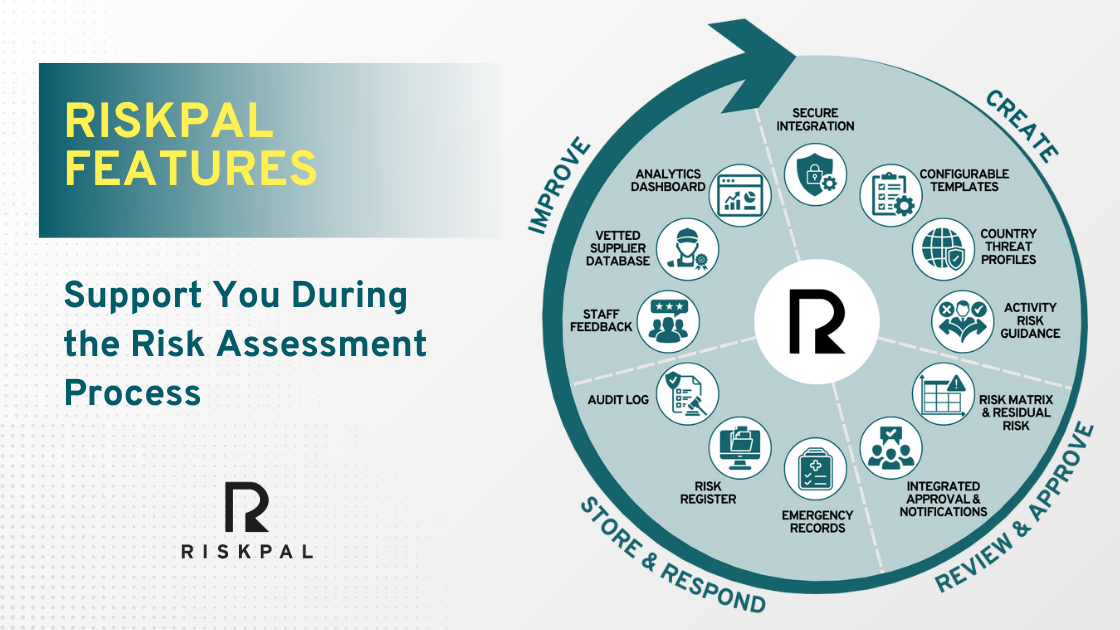Insight: Things You Should Know When Digitising Your Travel Risk Management Programme
Digital transformation is a hot topic in higher education. As universities face mounting costs and greater competition, they are having to seek new opportunities in terms of attracting students and revenues. Admissions officers are traveling further afield, and courses offer more foreign trips or placements to increase appeal. Meanwhile, academics are itching to get back out there having had foreign travel cancelled during the pandemic.
Health and safety departments are having to adapt to these new dynamics. Many now see digitisation as the best solution to deal with the mounting workload, particularly when it comes to travel risk management.
The technology exists to streamline risk assessment processes, so they can be produced at scale and still allow for the flexibility needed to address the unique types of trips university personnel embark on.
The benefits of a digital travel risk management platform are clear:
However, universities are complex organisations with multiple priorities, legacy systems, long procurement cycles, intricate sign-off processes involving a myriad of stakeholders and, as it is often the case, a resistance to all things new. Change is not easy.
We have spoken to many university Heads of Health and Safety to better understand the challenges they are facing. Based on these conversations we have outlined the key hurdles to digitisation and how to overcome them during the digital adoption process.

Procurement: Complex Structure
“A university is a collection of schools and departments, with only a common heating system, holding it all together.” This is how one Head of Health and Safety, described the complex and often competing entities in a university.
Universities are not run like big businesses with a clear, corporate management structure. Universities are typically made of separate schools or departments which often operate in silos and with great autonomy. Processes and working practises are often divergent.
Any travel risk assessment programme also needs to be able to deal with a multitude of stakeholders ranging from the traveller to external risk advisors, insurers, heads of department, the school management committee, and the executive board, all of whom may be involved in the sign-off process for risk assessments.
Furthermore, university budgets add another layer of complexity as financial systems and revenue streams can differ from school to school. To take a digitisation project forward, an agreement must be reached regarding the alignment of budgets and a continued monetary commitment.
A travel risk management process must be applied equally across all areas of an academic institution. Any digitisation programme will need partners in every school and department, as well as the support of IT, communications and business improvement teams.
Getting universal agreement from key stakeholders on what information and functionality to request from suppliers in the procurement process can be arduous, but will make the difference between a successful and failed digital transformation programme.
Tips for success:

Set Up and Onboarding
You have successfully gone through procurement and now it should be plain sailing, right? Actually, product rollout is where the hard work really begins as change management is often the most challenging part.
To begin with the technical set up involves decisions about platform customisations, user lists, user groups and special access privileges. Critical to any digitisation process is identifying your system administrators who will be responsible for setting up and maintaining the platform. This task by itself is not an easy feat. In an extreme case, one university told us that this is an uphill struggle because they simply do not have a list of all the staff and their roles across all the schools. So, in some cases, you may need to start here.
Then you need to turn to the human aspect of onboarding users. Communication is key to success, and you need to answer the following questions:
From there the users need to be trained how to use the new system, which can be done in person or, especially in the case of large institutions, online.
Tips for success:

Resistance versus Adoption
In every organisation there will always be people who struggle to adopt to new technologies or outright resist any change. Our research reveals that this is a common issue facing any digitisation initiative in the education sector.
Academic freedom is at the heart of higher education institutions. Tutors and lecturers are not used to working in a corporate-style environment with a senior manager telling them how to do their day-to-day work. Bureaucracy is often treated as someone else’s problem.
So, hope for easy adoption, but prepare for some friction.
Tips for success:
At RiskPal, we are working with educational institutions, media organisations and NGOs to develop their internal travel risk management infrastructure, digitise their risk assessment systems and become ISO 31030 compliant.
Want a checklist for your digital transformation? Click below to download now!
Are you ready to make your risk assessment simple and achieving
compliance straight forward.



